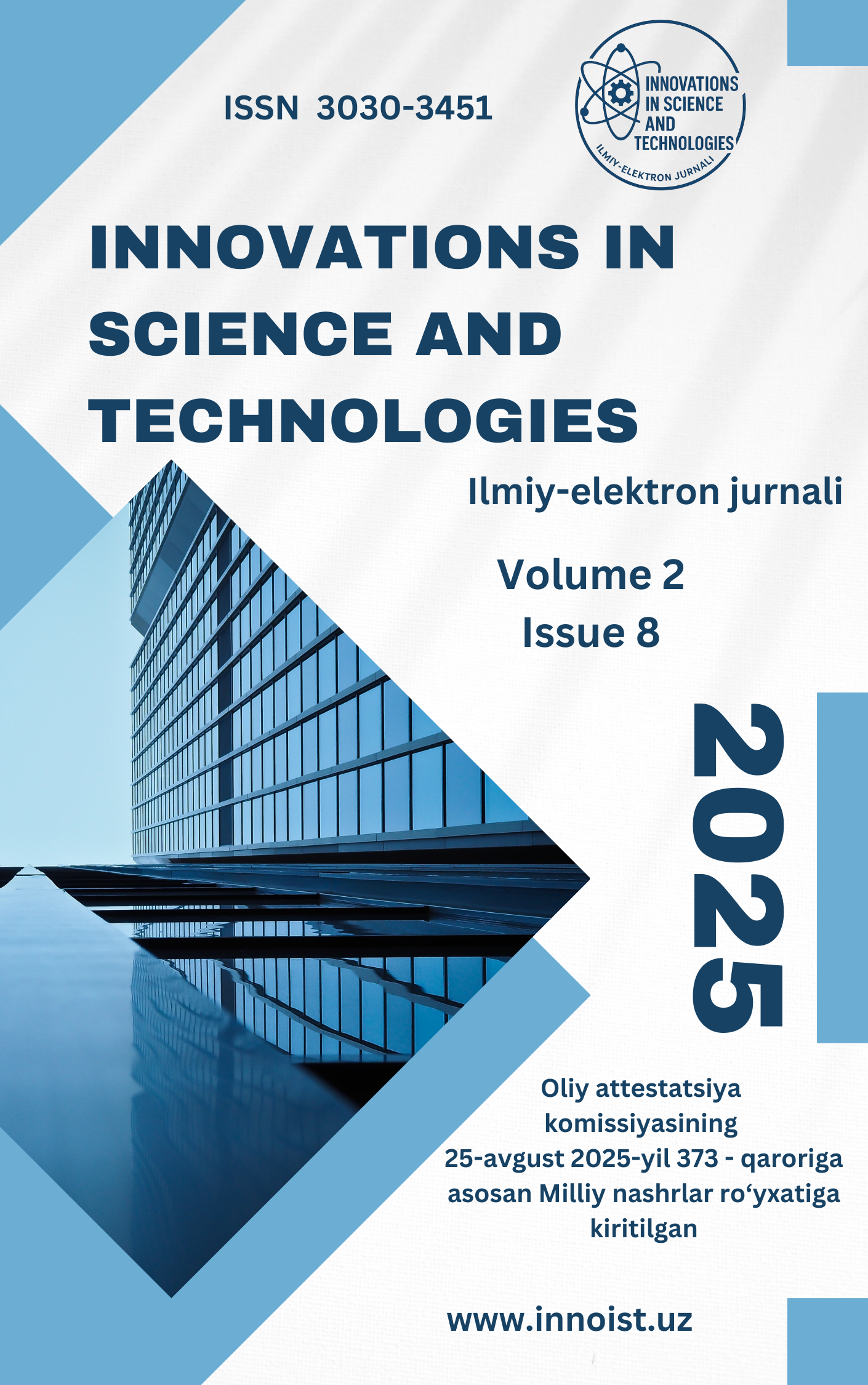AN IMPROVED ALGORITHM FOR PROCESSING BLOOD CELL IMAGES AND EFFICIENT DISEASE DETACTION
Keywords:
Blood cell images, segmentation, classification, deep learning, EfficientNet, UNet, CNN, automation, diagnostics, biomedical imaging, Dice coefficient, disease detection, image preprocessing.Abstract
This paper presents an enhanced algorithm for the processing of blood cell images to improve the accuracy and efficiency of disease detection. The proposed method integrates EfficientNet as the encoder and a customized U-Net decoder for segmentation, followed by a CNNbased classification of identified cells. The algorithm addresses challenges in noisy background removal, precise segmentation, and accurate classification of different blood cell types. It was tested on publicly available datasets and compared with traditional models such as ResNet and VGG in terms of accuracy, Dice coefficient, and inference time. The results show a significant improvement in segmentation accuracy (Dice = 0.89) and disease classification performance. The proposed model provides a reliable and efficient solution for medical image analysis, offering potential applications in hematology diagnostics and automated laboratory systems.
Downloads
References
1. RONNEBERGER, O.; FISCHER, P.; BROX, T. U-Net: Convolutional Networks for Biomedical Image Segmentation // Lecture Notes in Computer Science. – Springer, 2015. – Vol. 9351. – P. 234–241.
2. TAN, M.; LE, Q. V. EfficientNet: Rethinking Model Scaling for Convolutional Neural Networks // Proceedings of the International Conference on Machine Learning (ICML). – 2019.
3. LITJENS, G.; KOOLEN, M.; et al. A Survey on Deep Learning in Medical Image Analysis // Medical Image Analysis. – 2017. – Vol. 42. – P. 60–88.
4. ABBAS, N.; et al. A Review of Machine Learning in Hematology Image Analysis // Computers in Biology and Medicine. – 2020. – Vol. 125. – P. 103936.
5. KRIZHEVSKY, A.; SUTSKEVER, I.; HINTON, G. ImageNet Classification with Deep Convolutional Neural Networks // Advances in Neural Information Processing Systems (NIPS). – 2012.
6. ISIN, F.; DIREKOGLU, M.; SAH, S. Review of Object Detection in Medical Imaging // Procedia Computer Science. – 2016. – Vol. 102. – P. 325–332.
7. MOONEY, P. Blood Cell Images Dataset for Classification [Elektron resurs]. – Kaggle, 2018. – URL: https://www.kaggle.com/paultimothymooney/blood-cells (murojaat qilingan sana: 26.09.2025).
8. REHMAN, S.; et al. Classification of Acute Lymphoblastic Leukemia Using Deep Learning // Multimedia Tools and Applications. – 2020. – Vol. 79, № 3. – P. 1823–1839.
9. LONG, J.; SHELHAMER, E.; DARRELL, T. Fully Convolutional Networks for Semantic Segmentation // Proceedings of the IEEE Conference on Computer Vision and Pattern Recognition (CVPR). – 2015.
10. SIMONYAN, K.; ZISSERMAN, A. Very Deep Convolutional Networks for Large-Scale Image Recognition // arXiv preprint arXiv:1409.1556. – 2014.
11. CHEN, H.; et al. DCAN: Deep Contour-Aware Networks for Accurate Gland Segmentation // Proceedings of the IEEE Conference on Computer Vision and Pattern Recognition (CVPR). – 2016. – P. 2487–2496.
12. LECUN, Y.; BENGIO, Y.; HINTON, G. Deep Learning // Nature. – 2015. – Vol. 521. – P. 436–444.
13. HOU, L.; SAMARAS, D.; KURC, T. M. Patch-based Convolutional Neural Network for Whole Slide Tissue Image Classification // Proceedings of the IEEE Conference on Computer Vision and Pattern Recognition (CVPR). – 2016.
14. HAVAEI, D.; et al. Brain Tumor Segmentation with Deep Neural Networks // Medical Image Analysis. – 2017. – Vol. 35. – P. 18–31.
15. ISLAM, Z. Z.; et al. Detection of Leukemia in Blood Cells Using CNN // ICT Express. – 2020. – Vol. 6, № 4. – P. 270–275.
16. KUMAR, R.; et al. A Review of Deep Learning Methods for Medical Image Analysis // ACM Computing Surveys. – 2021. – Vol. 54, № 4. – P. 1–35.
17. GLOROT, X.; BENGIO, Y. Understanding the Difficulty of Training Deep Feedforward Neural Networks // Proceedings of the International Conference on Artificial Intelligence and Statistics (AISTATS). – 2010.
18. VASWANI, A.; et al. Attention is All You Need // Advances in Neural Information Processing Systems (NeurIPS). – 2017.
19. AGARAP, M. A. F. Deep Learning Using Rectified Linear Units (ReLU) // arXiv preprint arXiv:1803.08375. – 2018.
20. KINGMA, D. P.; BA, J. Adam: A Method for Stochastic Optimization // Proceedings of the International Conference on Learning Representations (ICLR). – 2015.
21. MOLLAH, M. F.; et al. A Segmentation Based Approach for Leukemia Detection Using Deep Learning // Procedia Computer Science. – 2019. – Vol. 154. – P. 409–416.
22. GRAHAM, T.; et al. Hover-Net: Simultaneous Segmentation and Classification of Nuclei in Multi-Tissue Histology Images // Medical Image Analysis. – 2019. – Vol. 58. – P. 101563.
23. WANG, D. Z.; et al. Deep Learning for Identifying Metastatic Breast Cancer // arXiv preprint arXiv:1606.05718. – 2016.
24. RAJPURKAR, P.; et al. CheXNet: Radiologist-Level Pneumonia Detection on Chest X-Rays with Deep Learning // arXiv preprint arXiv:1711.05225. – 2017.
25. GOODFELLOW, I.; BENGIO, Y.; COURVILLE, A. Deep Learning. – Cambridge, MA: MIT Press, 2016. – 800 p.
Downloads
Published
Issue
Section
License

This work is licensed under a Creative Commons Attribution 4.0 International License.
License Terms of our Journal











